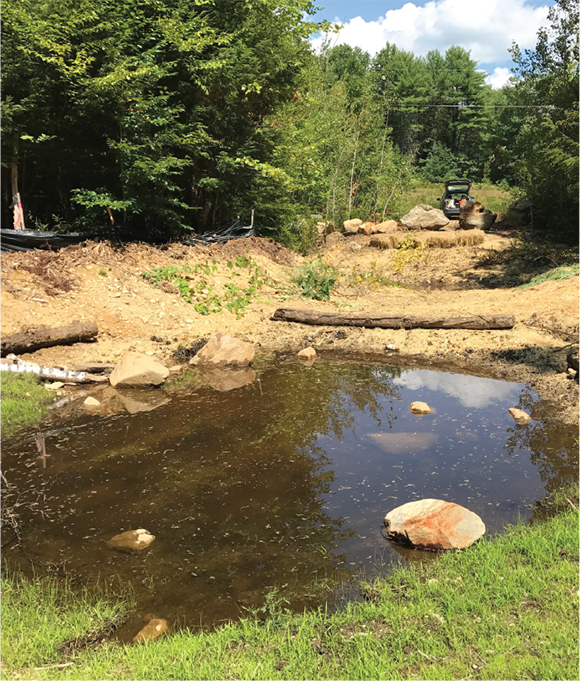Alfred, ME
PROBLEM | The Native Americans called the area surrounding Alfred, ME, Massabesic, meaning “the place of much water.” The streams, ponds, and wetlands of Alfred remain a prominent feature of what defines this town. A recognition that these resources need protection led to efforts by the Three Rivers Land Trust to permanently protect and enhance the nesting grounds for Blanding’s Turtles and other aquatic species in this focus area. The Maine Natural Resource Conservation Program (MNRCP), provided a grant to Three Rivers Land Trust, administered by the Maine Chapter of The Nature Conservancy, which funded a significant land purchase and this restoration project.
PROJECT HIGHLIGHTS
- Stream & wetland evaluation and restoration planning
- Local, State, and federal permitting
- Culvert removal and stream restoration
- Restoration of floodplain and seasonal wetland areas
CLIENT / COLLABORATORS
- Three Rivers Land Trust – Client
- Ilex Wetland Consultants
- Maine Natural Resource Conservation Program
- The Nature Conservancy, Maine
- Town of Alfred, ME

SOLUTION & METHOD |  Working with the Three Rivers Land Trust and MNRCP, Truslow RC developed an approach to stream and wetland restoration on a tributary to the Middle Mousam River in Alfred, which had been previously altered in anticipation of land development. The project began in 2016 with an evaluation of area wetlands and hydrology. This was followed by the creation of a wetland and stream restoration plan. After plan approval, we secured local, state and federal permits on behalf of Three Rivers Land Trust.
Working with the Three Rivers Land Trust and MNRCP, Truslow RC developed an approach to stream and wetland restoration on a tributary to the Middle Mousam River in Alfred, which had been previously altered in anticipation of land development. The project began in 2016 with an evaluation of area wetlands and hydrology. This was followed by the creation of a wetland and stream restoration plan. After plan approval, we secured local, state and federal permits on behalf of Three Rivers Land Trust.
Restoration began in June 2017 and was completed in August 2017. Ilex Wetland Consultants completed the wetland delineation and collaborated on the wetland restoration planning and implementation. The restoration created or enhanced a vernal pool area, a floodplain wetland, and a riparian wetland. Part of the restoration included removing a culvert in order to improve stream connectivity. Finally, a monitoring program has been developed to evaluate restoration success and to provide guidance for adaptive management as the restoration areas mature.